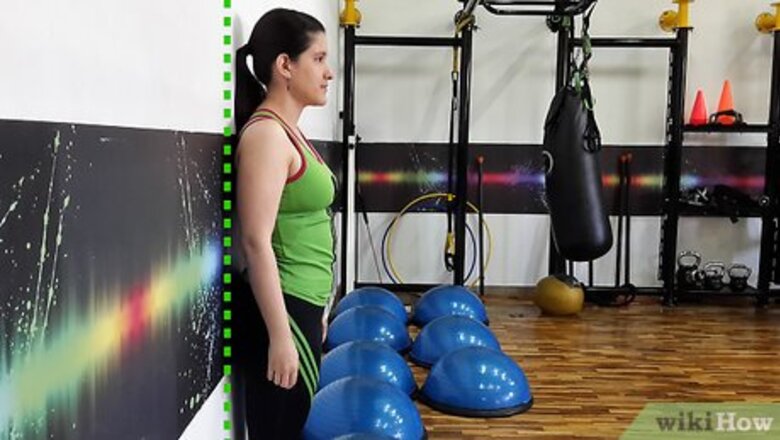
views
X
Expert Source
Julian Arana, M.S.eD., NCSF-CPTCertified Personal Trainer
Expert Interview. 19 March 2020.
The best part? You can do this exercise anywhere there's a wall to lean on. Add some simple modifications to really amp up your workout!
Basic Wall Sit
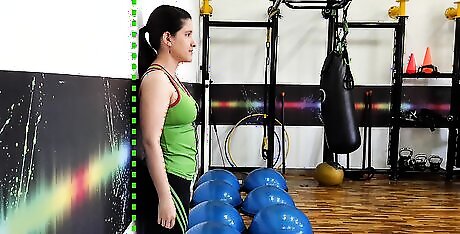
Stand with your back flat against a wall.
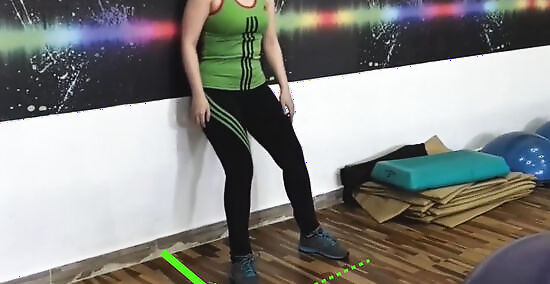
Walk your feet out about 2 feet in front of you, feet spread about 6 inches apart..
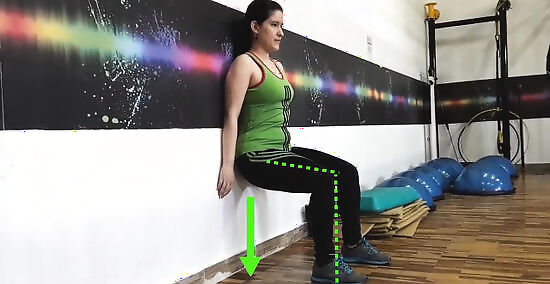
Slide your back down the wall, bending your knees until they are bent at about a 90 degree angle. Your thighs should be parallel to the ground and it should appear that you are sitting in an invisible chair. Your knees should never extend past your ankles--they should be straight above your ankles. You may need to slide further up or down on the wall to get into this position. This position strengthens your quadriceps on the front of your thigh and your hamstrings on the back of your thigh, which can help prevent damage to your knees. These muscles are necessary for everyday actions like standing and walking, so it's important to keep them in good shape.
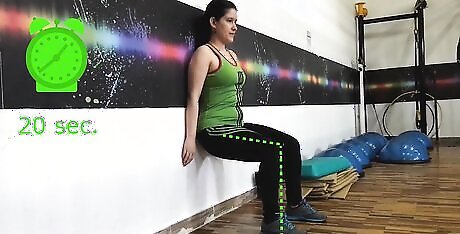
Hold this seated position for 20-60 seconds, contracting your abdominal muscles. Your thighs will start to burn after 20 seconds, but try to stick it out for the full 60.
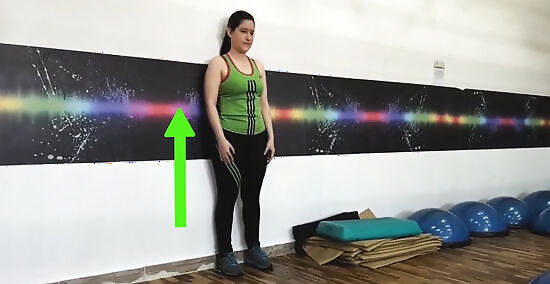
Straighten your legs and come back to a standing lean against the wall. Rest for 30 seconds, then repeat. Try to do 5 sits at 60 seconds each, or until your muscles become too fatigued to hold the sitting position. If a trainer or doctor has instructed you to do a different number of sits for a different length of time, follow their orders. This is simply a guideline to get you started.
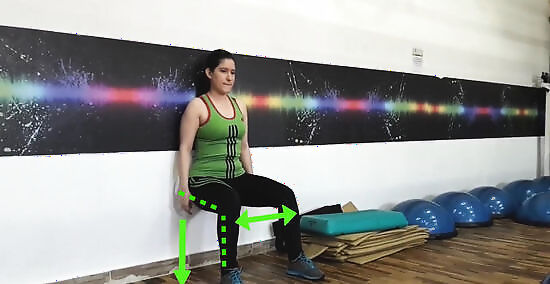
Change the angle of your bent knees to change the intensity of the exercise. Instead of repeating the move and bending your knees to 90 degrees each time, first slide down the wall only a couple of inches. The next rep, slide a little bit further down, and so on.
Wall Sit with Medicine Ball
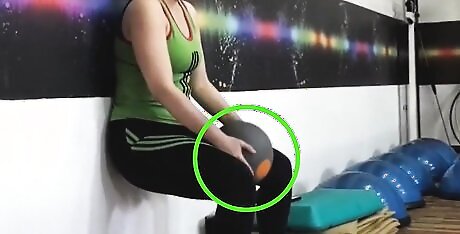
Place a medicine ball between your knees. If you don't have a medicine ball, you can substitute a basketball or kickball, or even a pillow or a rolled up towel.
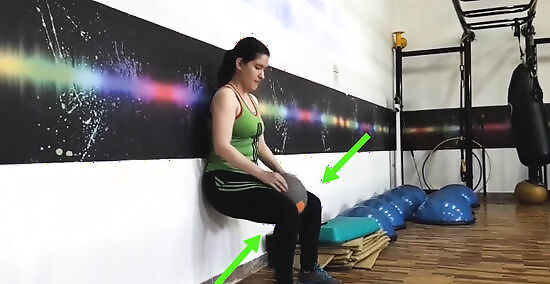
Squeeze the ball hard with your knees as you slide into the sitting position. This will work an additional set of muscles on your inner thighs, your adductors.
Wall Sit with Dumbbells
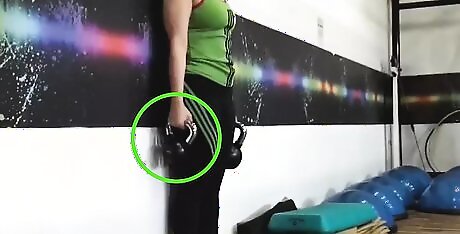
Hold a 2lb dumbbell in each hand.
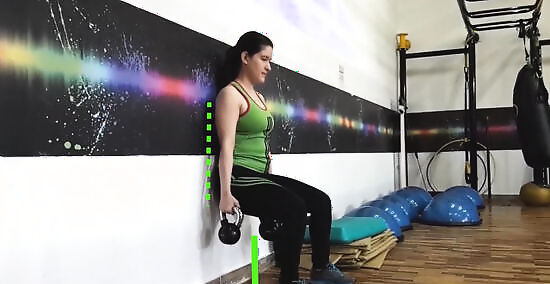
Keep your arms straight at your sides as you lower and straighten against the wall.
Marching Wall Sit
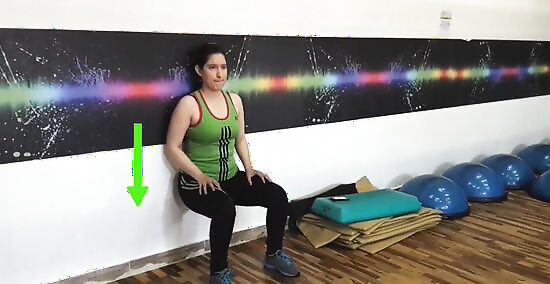
Slide into the sitting position. Do not attempt this variation if you have injured, inflamed, or weak knees.
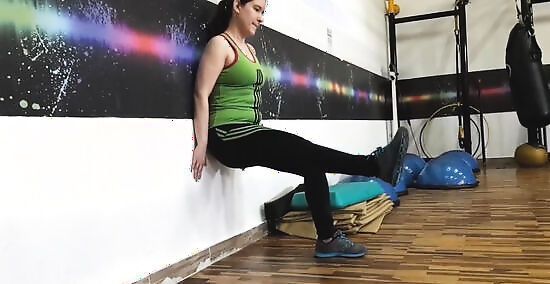
Extend your right leg slowly and hold it straight out in front of you. Use your thigh muscles and your core to stabilize this position.
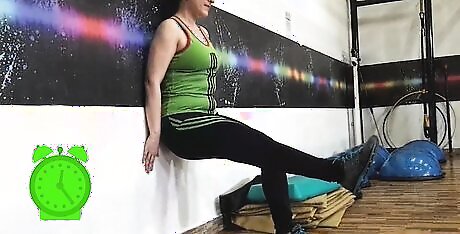
Hold your leg straight out for a few seconds.
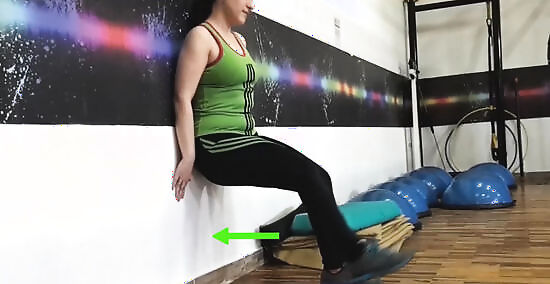
Lower your right leg slowly.
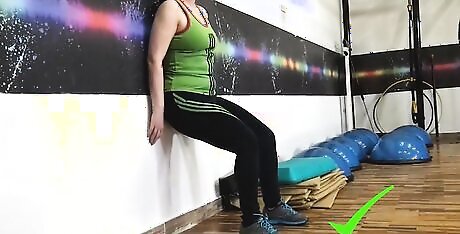
Stabilize yourself in the sitting position.
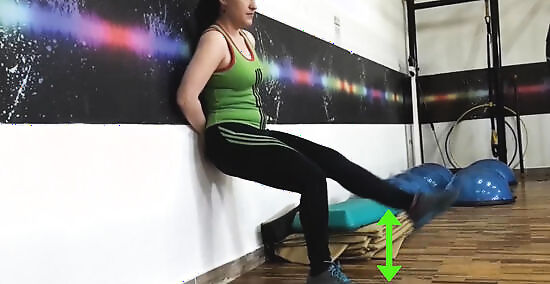
Extend your left leg slowly, holding it straight out in front of you. Your entire leg should be parallel to the floor.

Hold your leg straight for a few seconds.
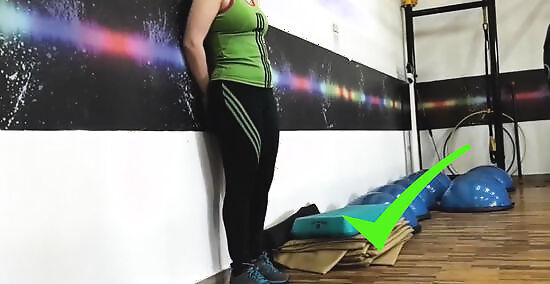
Lower your left leg.
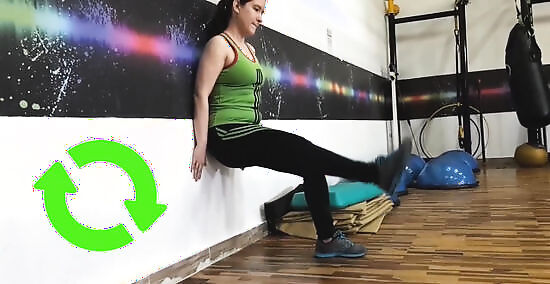
Repeat the exercise, again straightening your right leg. You can "march" for a certain amount of time or reps (try starting with 4 reps with each leg).
Wall Sit with Resistance Band
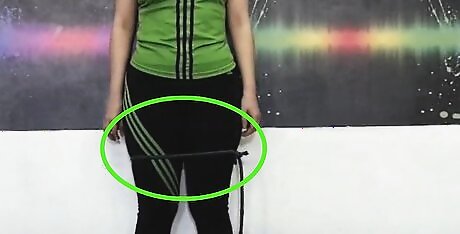
Place the resistance band around your legs, just above your knees. If you don't have a resistance band, try using a belt instead.
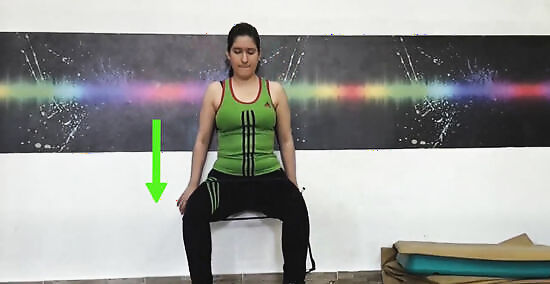
Slide down the wall into the sitting position.
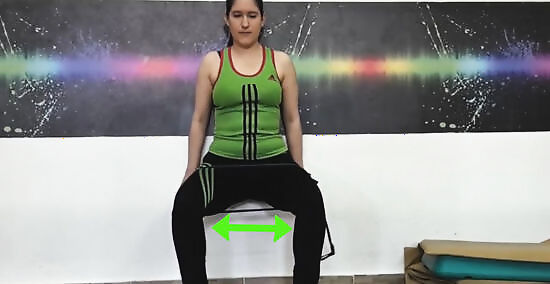
As you slide, press your legs against the resistance band to maintain the proper position. The band will be trying to bring your knees towards each other, and you must press out against it to keep your knees 6 inches apart. This will engage your gluteus (butt) and abductor (outer thigh) muscles.
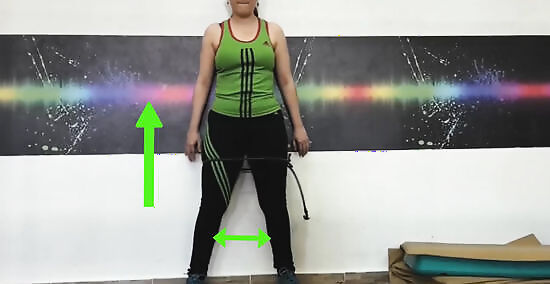
Slide back up the wall, still pressing against the band to keep your knees 6 inches apart. This modification can help you learn to maintain proper form when doing regular squats.




















Comments
0 comment